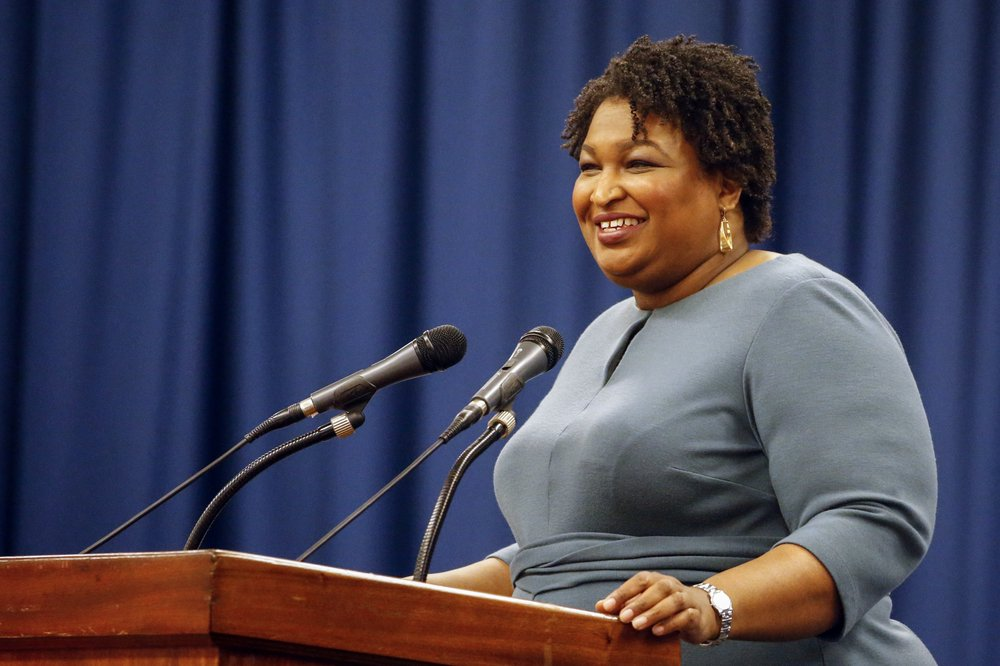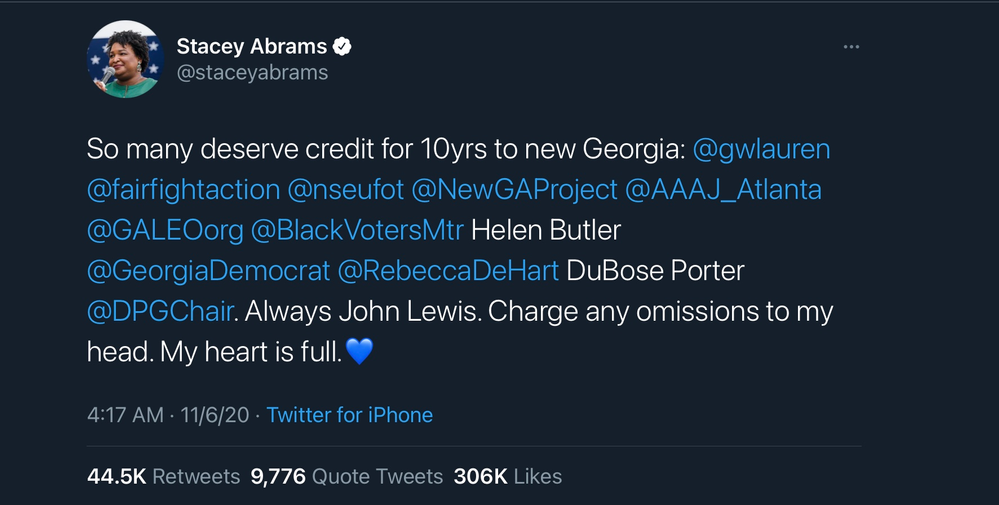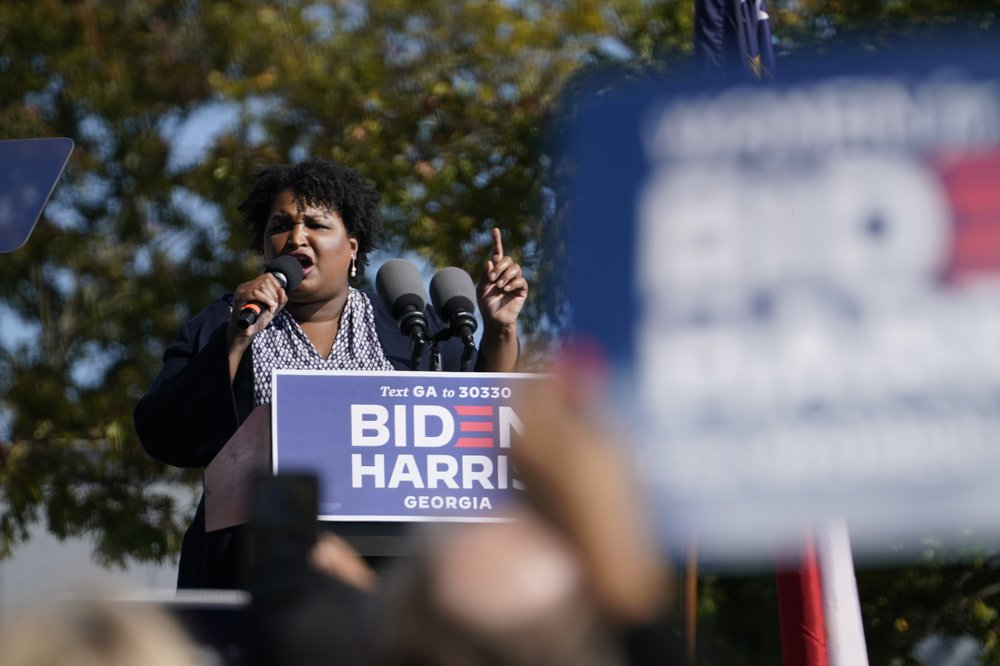In the contentious battle for the presidency between Joe Biden and Donald Trump, all eyes were focused on Georgia. We all know how that story turned out. Joe Biden is going to be the first president in 30 years from the Democratic party to carry Georgia. While the announcement that Georgia flipped blue came as a shock to many, activists in the state had been planning for this moment for nearly a decade. At the forefront of those leading the effort to flip the state was Stacy Abrams and a group of Black female elected officials, voting rights advocates, and community organizers.
Abrams’ narrow loss in Georgia’s gubernatorial election showed her and other liberals in the state that the scales of demographic changes in the suburbs were ready to tip. They recognized that Democrats could win more races by expanding their coalition to include disengaged voters of color, as opposed to pursuing the age old strategy of persuading undecided, moderate, often white voters. In past decades, Democrats had often fallen short in the South. At the top of the list of reasons: the region’s long-standing conservative trend, voter suppression tactics by the right, and the failure of Democrats to launch a sustained voter outreach program.

Photo: AP Photo/Butch Dill
In 2018, Abrams came close with this strategy, registering more than 200,000 new voters in the run-up to the election. This year, Fair Fight and the New Georgia Project, two organizations founded by Abrams, quadrupled their gains, registering more than 800,000 new voters. Abrams’ approach of expanding an existing coalition has proven successful in Georgia, serving as a blueprint for how Democrats can win elections in other red states that are moving left. “When you’re trying to not only harness demographic changes but leverage low-propensity voters, you cannot simply hope that they’ll hear the message. You have to treat them as persuasion voters,” Abrams told POLITICO before Election Day. “Only the message is not trying to persuade them to share Democratic values. Your message is to persuade them that voting can actually yield change.”

Abrams launched her initiative in 2013 when she founded the New Georgia Project while serving in the Georgia House of Representatives. It aimed to reach out to minority and young voters, two groups that are too often left out of the political process, but represent the best chance at delivering the state for Democrats. In a late-2019 memo to Democratic strategists and presidential candidates, Abrams formalized her argument. The key to winning Georgia, she wrote, was engaging new voters, establishing strongholds in Georgia’s demographically changing suburbs and protecting voters’ access to the polls. “Any[thing] less than a full investment in Georgia would amount to strategic malpractice,” she wrote.
“We’ve been building this moment for some time,” said Georgia Democratic Party Chair Nikema Williams, who was elected to succeed the late John Lewis in Congress. “And then this year brought the perfect opportunity,” she said, with racial protests, the COVID-19 pandemic, and excitement about Biden and Kamala Harris motivating voters. But the success that has been achieved is owed to one of the most crucial, consistent voting blocs in Georgia and across the country: Black women. Exit polls revealed that 91 percent of Black women voted for Biden, driven by their contempt for Trump and the representation they see in Harris.

Photo: AP Photo/Brynn Anderson
However, interestingly enough, Abrams’s strategy was not accepted by the party establishment. Political strategist and lead organizer with the Movement for Black Lives, Jessica Byrd, helped direct Abrams’ 2018 bid as a deputy campaign manager. According to Byrd, the campaign team warned in 2018 that their plan would only work if the most necessary voters – largely first time, young and Black- were not disenfranchised. The party was not willing to provide the voter protection resources the campaign was looking for. Byrd remembered Democrats painting Abrams’ campaign strategy as “just crazy.” Though she said that Biden’s success this year, which included major effort by national Democrats to counter voter superstition by equipping voters with information about how to request provisional ballots, and filing litigations against Republicans, affirmed Abrams’ strategy. “People largely kind of ignored that it would be the rigging of that election that would prevent her from losing,” Byrd explained, referencing then Secretary of State Brian Kemp’s removal of more than 100,000 voters from the rolls. His act drew widespread claims of voter suppression and contributed to Abrams’ narrow loss.
“We’ve been aggressive since 2018. We had record numbers here. Instead of hoping that the national campaigns would see these numbers, we’ve been aggressive and assiduous in sharing the data but also in pursuing investment,” Abrams said, citing the record increase in turnout among Black, Latino and Asian-American voters.“We have been relentless in not only championing Georgia as a state for investment but really being able to show the utility of being here.”
Powered by WPeMatico


